Last updated on February 9th, 2023 at 12:50 pm
*This post may contain affiliate links and we may earn a small commission if you click on them.
Learn how to clone your wardrobe and copy a pair of pants faster than going to the store and finding ones that fit!
Do you have a favorite shirt or pair of pants in your closet that you absolutely LOVE! It is easy to duplicate your favorite outfits so you can love your entire closet!
This is a picture of my favorite skinny jeans. My husband referred to these as my HOT pants! Haha.

As you can see, they got holes in them! Oh no! They are not meant to have holes in the knees.
I decided I needed to do something to preserve my “hot” pants. I thought, “Why not clone them?!”
Surprisingly, using a projector to copy the pants was quick and simple. Now I have a new pair of “hot” pants made by me! AND a pattern that I can use over and over again!
If you are just learning about using a projector for sewing, then make sure to stick around and learn how to get started using a projector for sewing today!
Jump in a choose a projector today!
If you don’t have a projector yet, you can use this tutorial still and trace on paper instead of on the computer. (Spoiler alert: It’s faster on a computer!)
Today I will be using Affinity Designer to clone my pants. You can use any vector graphics program that allows you to type in a zoom percent such as Inkscape or Adobe Illustrator.
A bonus of doing it digitally is that you can save at any time and come back to it later!
I recommend sewists with intermediate to advance skills for this tutorial. You will need to know how to construct pants without a pattern instruction sheet. If you have a pant pattern, use that to guide you as needed!
Step 1: Calibrate Your Projector in Affinity Designer
The first step is to make sure you will be tracing in “actual size”. This means you will need to know what zoom percent to put in Affinity Designer so that your artboard is in actual size.
Make sure to check out this article on how to calibrate a projector in Affinity Designer, if you haven’t done it before!
Step 2: Lay out Your Pants
Working on your cutting table, lay out your pants as flat as you can.
I used my pattern weights (floor tile samples) to hold the fabric in place. You could also tac your pants onto some cardboard for better accuracy. I decided flattening and pattern weights would work okay for me.
Try to make all side seams visible, if possible. Some pants will not be able to lay flat and show both side seams.
That is okay! Lay the pants flat with one seam (side or inseam) showing. Then you will measure the amount of fabric folded under to the hidden seam when you are tracing.
Step 3: Trace the Seam lines
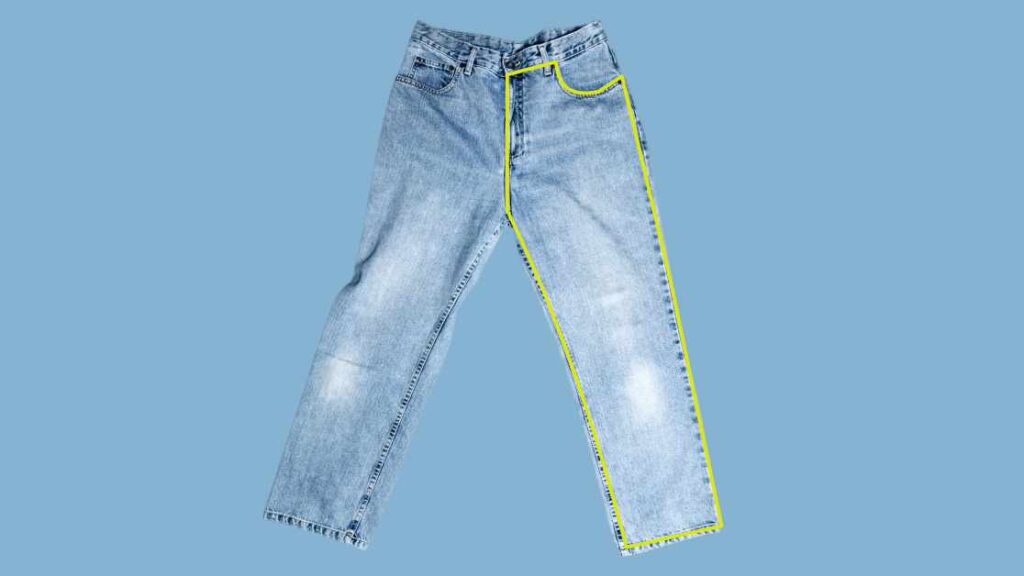
In Affinity Designer, make sure your zoom percent is set. Press the “Tab” key and you will enter “full screen” mode.
You will be using the Pen tool (P) and the Node Tool (A) as you trace.
Press P to open the Pen tool and begin tracing the seam lines. Try to place the drawn line right over the seam.
You will correct the curves later, so put points around the pattern to get the shape of the pattern piece.
Once you have finished drawing with the pen tool, make sure to press “Enter” to end the line or close the line by connecting it to the first node you drew.
*Doing this on paper, you will just be using a pencil or pen to draw the lines onto tracing paper.
Use the node tool (A) to adjust the lines and curves as necessary. You can change the node types in the top context bar to sharp or smooth.
There are also blue handles attached when you click on some nodes. These will change the shape of the curve.
Adjust all the lines until they match the seams on the pants you are copying.
Step 4: Repeat for All Pattern Pieces
Examine the pants that you are copying. Look for all the seams. Copy all of the seams that appear in the pants.
Don’t forget pockets, pocket bags, fly, waistband, or any other “seams” on the pattern.
Tips for back of the pants:
When I flipped my pants over, the back piece was larger than the front piece. Since the pants were still sewn together, I couldn’t lay the pants flat and see both the side seam and inseam.
Lay the pants flat, then use a tape measure to measure the distance between the fold and the side seam. Add the measured amount to the fold line when sketching the side seam in Affinity Designer.
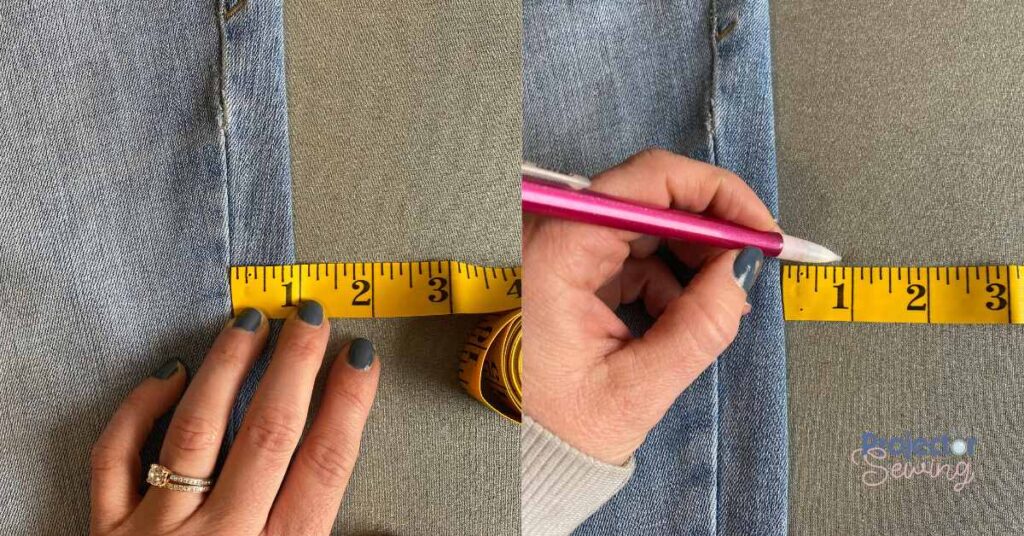
Tips for the crotch and fly:
Use several nodes as needed to get the curve on the crotch. You can also use a French curve ruler if you have one to try to curve the crotch as needed.
I looked at the pattern with a French curve ruler, but found the curves with the nodes where just fine.
Examine close how the fly is constructed. Use a measuring tape similar to how you did the side seams to make them correctly.
I decided to draft the fly on my pants. Here is the YouTube tutorial I used on Drafting the Fly. The fly turned out great on the finished product!
Step 5: Clean up Pattern and Add Seam Allowance
You can turn of your projector now and work directly in Affinity Designer. Clean up the pattern by correcting curves and straight lines as needed using the node tool.
Arrange the pattern pieces so the grainline is going in the same direction. Keep space between the pattern pieces so you can add seam allowance.
To add seam allowance, select the pattern piece and duplicate it. Then, select the “contour tool”. Enter the amount of seam allowance you would like into the “Radius”. It will need to be written in decimal form if you are using inches!
Change the endcap to “miter” and cap to “none”. The “align stroke” should be set to “center”. Once you press “enter” on the radius amount you should see the seam allowance added.
Click on “Bake Appearance” to set the lines.
For a full step-by-step tutorial on Adding Seam Allowance click HERE.
Add amount desired for hem too.
*You can choose to keep the original “seam lines” or delete them.
Step 6: Label Pattern Pieces and Arrange
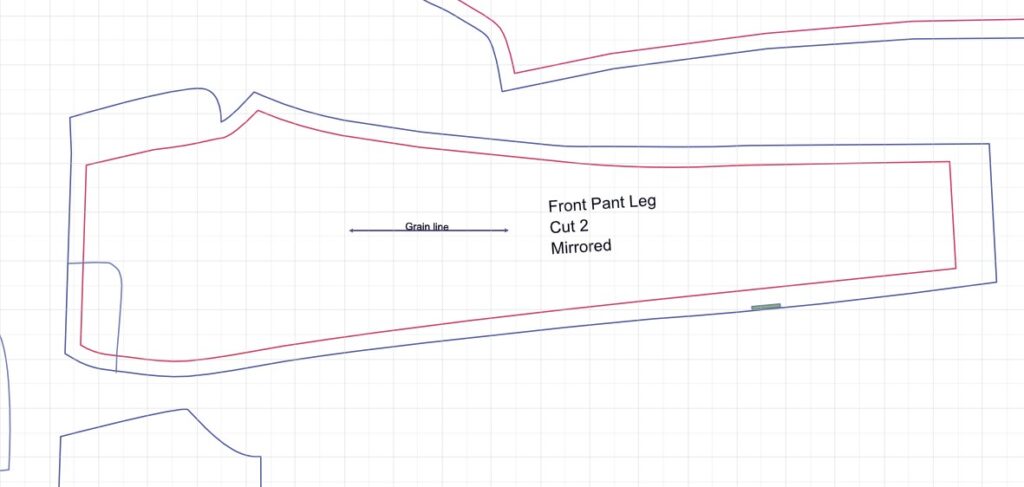
Next, label the pattern pieces with what they are and how many to cut.
I labeled my pants as “Front Pant Leg, Cut 2, Mirrored”.
Layout your pattern pieces how you would like them for cutting. You may find it easier to just create a new artboard or page to arrange the pieces on.
Don’t forget to SAVE!
Step 7: Export (optional)
You can project your pattern directly from Affinity Designer, or export it as a PDF to open in Adobe Acrobat Reader.
Step 8: Cut and Sew a Toile (Twahl)
Now for the exciting part! Test out your pattern using a similar material!
I cannot stress enough that your final product should be made out of the same type of material the original piece is made out of.
If the original has stretch, you need to find a fabric that has at least the same amount of stretch!
This is crucial to a fitting pattern!
When making the toile, it should be out of fabric with the same amount of stretch or no stretch as the original.
After making the toile, make any adjustments to your pattern as needed.
I decided that I wanted a little bit more room in my calves, so I added 1/8” to the seam on either side.
Step 9: Make the Final Product!
Finally, when you are happy with the fit, make the final product!
I made this pair of jeans and added a zipper instead of buttons and stitching to the back pockets. The calf area fits much better on my copied pair!
I absolutely love how my NEW “HOT” pants turned out. What do you think?!

I’d love to see what you make! Share your creation on Instagram or Facebook with the hashtag #projectorsewingtutorial and tag @ProjectorSewing!
Now, go clone your clothes! Make duplicates of all your favorites!


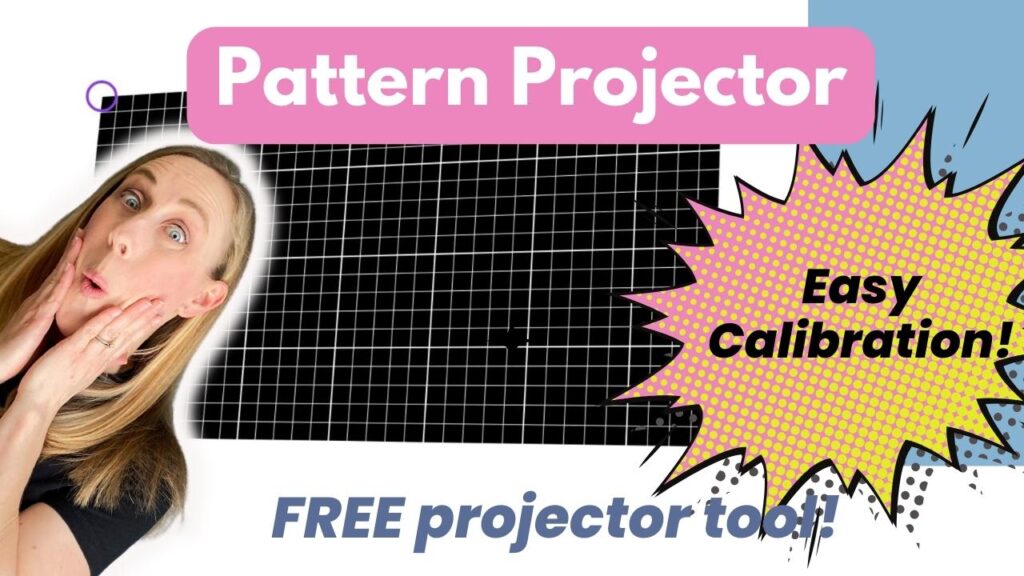
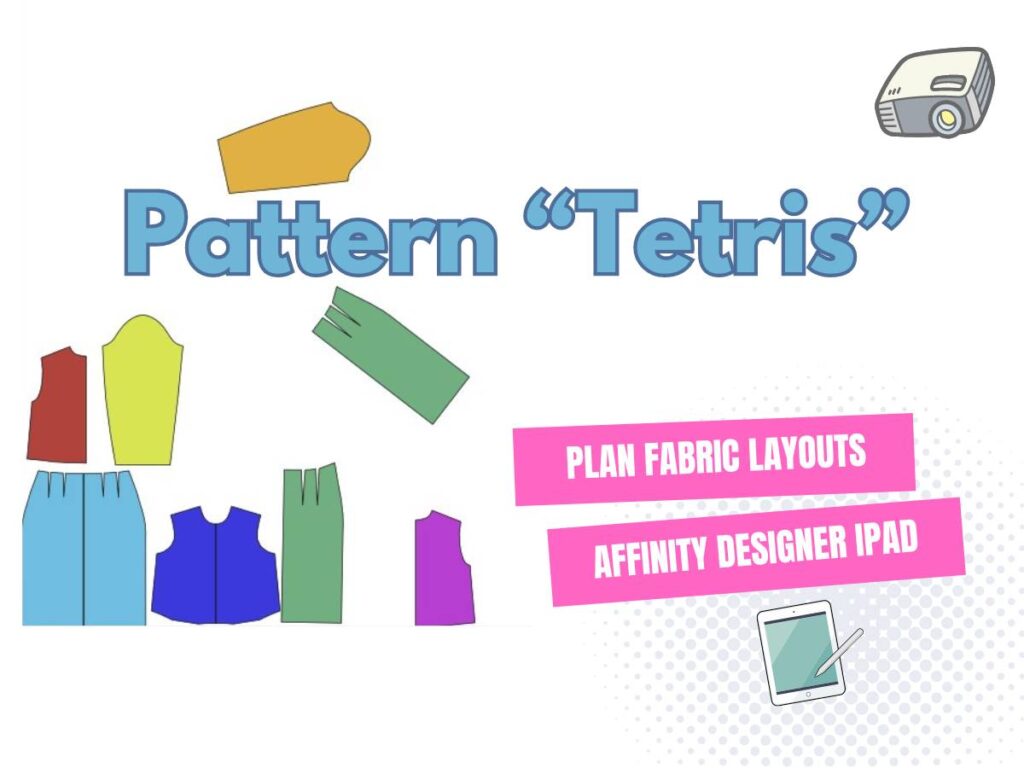
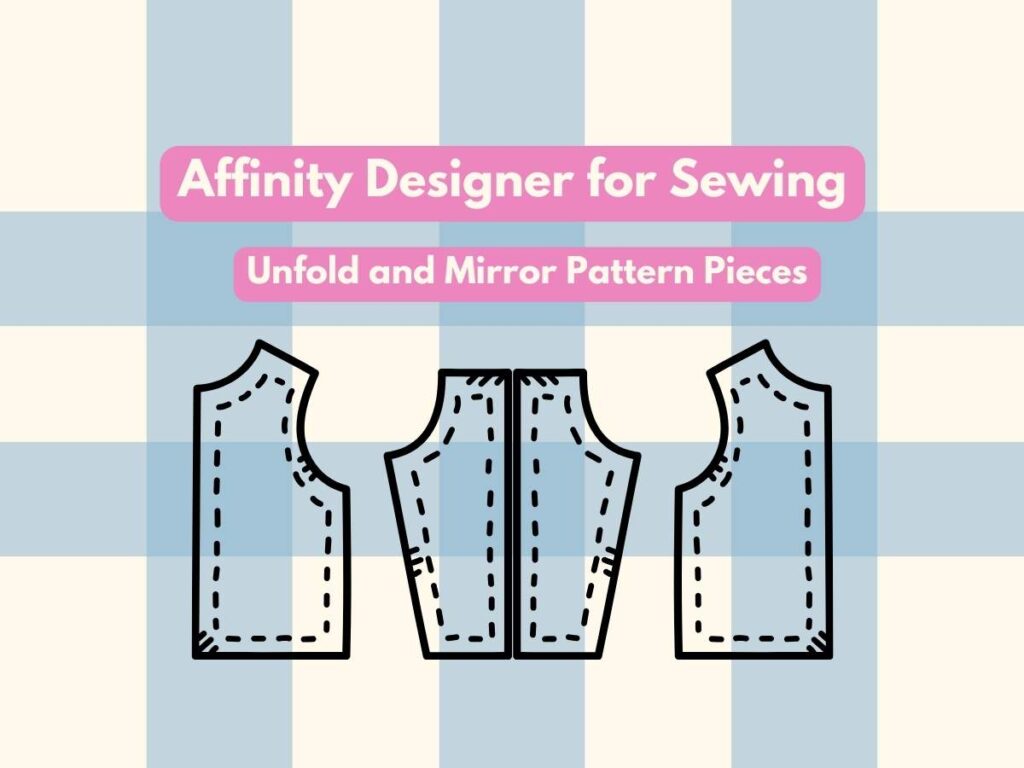
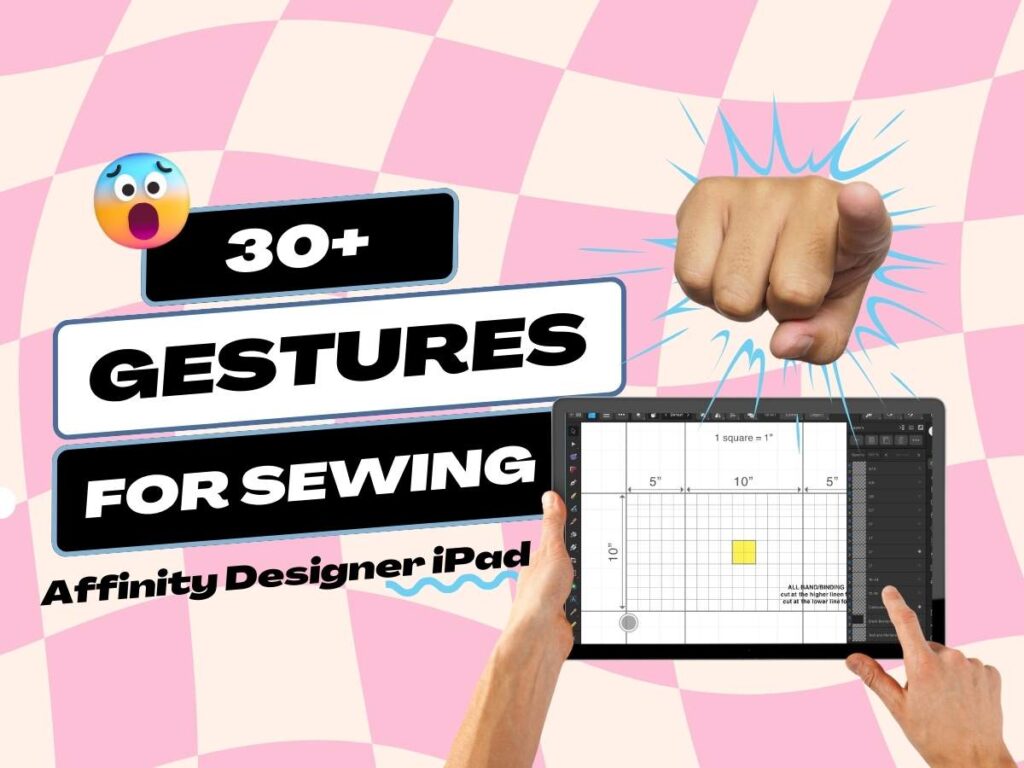
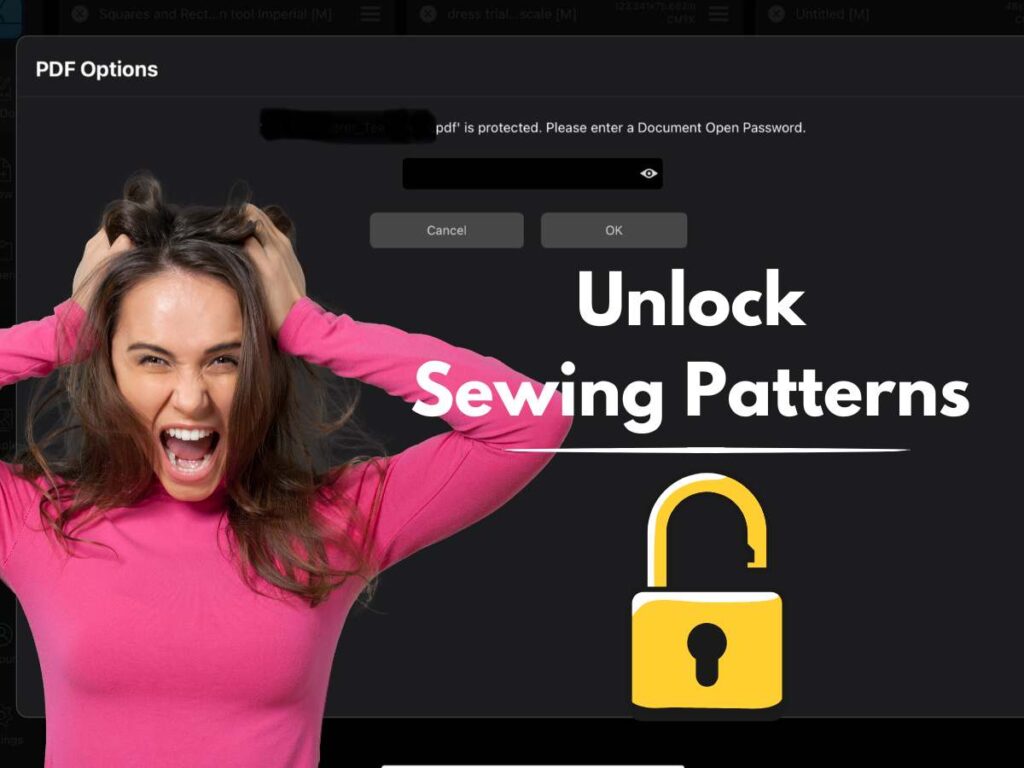

Hello Sheredit, thank you for the instructions. I cloned my favorite jeans last year using this
https://youtube.com/playlist?list=PLF6rZdQOC-BvN57utwhMkYgrUgSP8mpvF
With your help, I can now digitalize it, together with other favorites.
You have a little confusing sentence in this “Working on your cutting table, lay out your pants pattern. Lay them out as flat as you can” I don’t think you mean pattern here.
Thank you Kirsten! Yes, you are right, I will edit that sentence. Thank you!